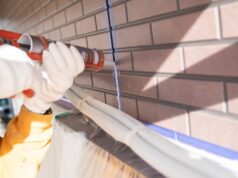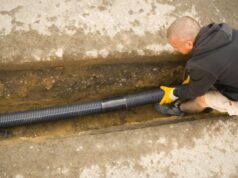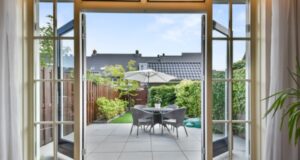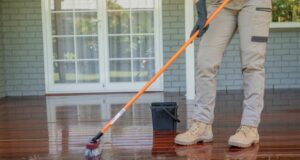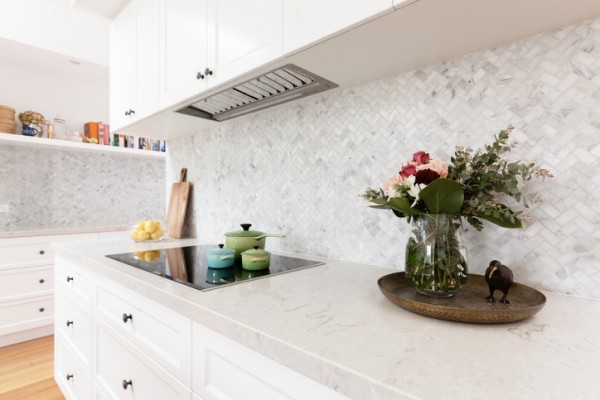
For years, stone has been the gold standard for kitchen benchtops. The sleek finish, the solid feel underhand, the prestige of quartz or marble have all made it the go-to for new builds and renovations alike. But as costs rise and sustainability takes centre stage, more home owners are rethinking whether they actually need stone.
The truth is, laminates, composites and engineered options have evolved so much in recent years that they now rival natural stone in both looks and performance. The best choice depends on your budget, how you use your kitchen and what kind of maintenance you’re willing to take on.
The appeal (and cost) of stone
There’s no denying the visual impact of a genuine stone benchtop. Whether it’s granite, marble or a high-end quartz composite, stone adds value and a feeling of permanence. It’s also heat-resistant, scratch-resistant and naturally unique as no two slabs are exactly alike.
But that quality comes at a price. Stone benchtops can range anywhere from $600 to more than $2,000 per square metre, depending on the material and thickness. Installation costs are higher too because stone is heavy, fragile before fitting and usually requires professional templating and sealing.
And while many home owners assume stone is maintenance-free, it’s not. Natural stone surfaces are porous, meaning they can stain or discolour if not regularly sealed. Oils, wine and citrus can all leave marks if left to sit, not ideal for busy family kitchens.
For many renovators and first-time builders, those costs and upkeep demands are starting to outweigh the prestige. That’s where modern laminates, composites and engineered surfaces come in.
Laminate: Affordable, versatile and underrated
Laminate benchtops have come a long way from the flimsy, easily chipped versions of the past. Today’s laminates are far more durable, featuring high-pressure coatings and realistic finishes that can mimic marble, timber, concrete and even terrazzo.
Pros:
- Extremely cost-effective, usually between $150 and $350 per square metre installed.
- Huge range of colours and finishes.
- Lightweight and easy to install, making it perfect for DIY renovators.
- Non-porous and resistant to stains.
Cons:
- Can be damaged by heat, hot pots or pans will leave marks.
- Vulnerable to edge swelling if water seeps into joints.
- Not repairable if deeply scratched or chipped.
For most households, laminate offers the best balance between aesthetics and affordability. It’s ideal for investment properties, budget-conscious builds or spaces where you want the look of stone without the cost.
As long as you’re mindful of heat and moisture exposure, a high-quality laminate can last 10–15 years or more.
Engineered stone: Still popular but under review
Engineered stone, often sold under brand names like Caesarstone or Silestone, is made from crushed quartz bound together with resin. It offers the uniform appearance of natural stone with enhanced durability and stain resistance.
However, engineered stone has come under scrutiny due to health concerns for fabricators exposed to crystalline silica dust during cutting and polishing. New rules and bans on high-silica products are being phased in across Australia.
If you’re considering engineered stone, check that it complies with the latest safety regulations and talk to your builder about alternative materials with low or no silica content.
Pros:
- Highly durable, non-porous and easy to clean.
- Consistent colour and pattern.
- Resistant to most stains and scratches.
Cons:
- Costly: Often $700–$1,500 per square metre.
- Heat can damage the resin if exposed directly to pots or pans.
- Environmental and health concerns due to silica content.
Despite the controversy, engineered stone remains a strong performer in existing installations. For new builds, though, many are looking to composite and solid-surface materials that offer similar benefits without the safety risks.
Composites and solid surfaces: The middle ground
Composite or “solid surface” benchtops, such as Corian, Lapitec or Staron, are made from acrylic resins blended with natural minerals. They’re designed to look and feel like stone but can be fabricated seamlessly, including integrated sinks or backsplashes.
Pros:
- Seamless joins and moulded edges give a sleek, custom look.
- Non-porous and repairable, meaning scratches can be buffed out.
- Warm to the touch and softer on dishes than stone.
- Can be formed into curved or unusual shapes.
Cons:
- Can be damaged by direct heat or harsh chemicals.
- Generally costs $600–$1,200 per square metre.
- Lacks the authentic “grain” or veining of natural stone.
Composites are ideal for home owners who want a premium, low-maintenance surface with design flexibility. They’re particularly popular in modern, minimalist kitchens where seamless surfaces are part of the aesthetic.
Sustainability and lifecycle
When choosing a benchtop, it’s worth considering how sustainable the material is, not just during production, but over its lifespan.
Natural stone is long-lasting, but quarrying and transport can carry a high carbon footprint. Laminates are lightweight and use less energy to produce, though they’re not easily recyclable. Solid surfaces and low-silica composites are emerging as better environmental options because they can be repaired or repurposed rather than replaced.
If you’re aiming for a low-impact build, look for GreenTag-certified materials or suppliers that offer recycled content and environmentally responsible manufacturing.
Making the right choice for your home
Ultimately, the “best” benchtop comes down to your lifestyle and priorities.
If you want luxury and long-term value, stone or solid surfaces deliver. If you’re on a budget or renovating for resale, laminate offers realistic looks with low upfront costs. And if you’re chasing something modern, hygienic and customisable, composites hit the sweet spot.
When you’re weighing up your options, think about how your kitchen will actually be used. A family with young kids might prioritise durability and easy cleaning, while an entertainer might value design and impact.
And remember: No benchtop lasts forever. What matters most is choosing a material that fits your needs now, your budget tomorrow and your maintenance tolerance for years to come.


